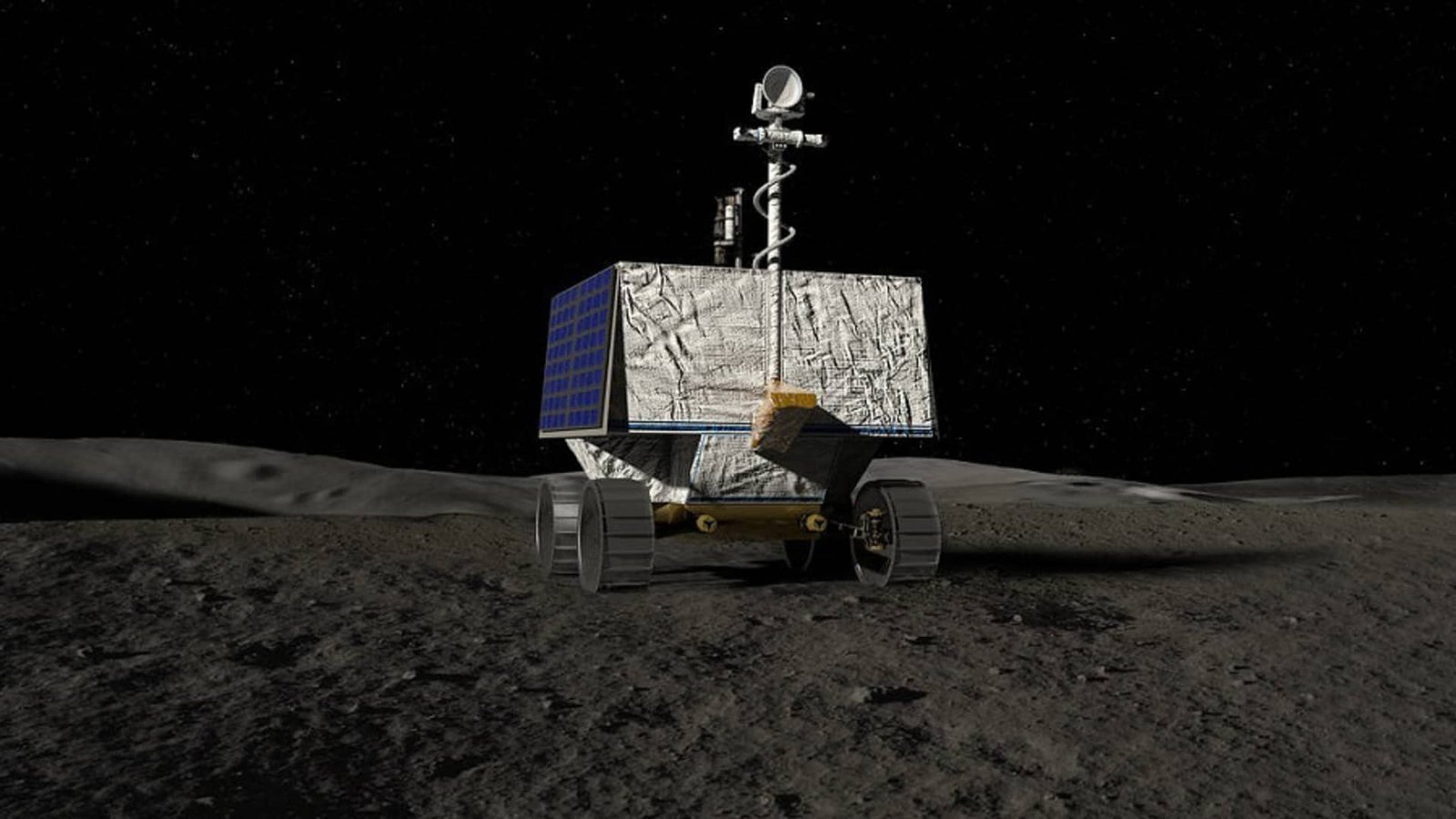In an unprecedented effort to explore the Moon’s resources, NASA’s Artemis program introduces the Volatiles Investigating Polar Exploration Rover (VIPER), aiming to scout the lunar South Pole for water ice and other potential resources. Slated for a late 2024 launch, this groundbreaking mission marks a significant leap towards sustainable lunar exploration and the broader objectives of human space exploration.
Key Highlights
- VIPER’s mission is to locate and analyze water ice at the Moon’s South Pole.
- The rover will operate for approximately 100 Earth days.
- Data collected will assist in mapping lunar resources, crucial for future Artemis missions.
- VIPER will navigate extreme conditions, including the Moon’s coldest regions.
Unveiling Lunar Mysteries: VIPER’s Mission and Capabilities
Exploring the Unknown:
The quest for lunar ice is not new, but VIPER introduces a novel approach by being NASA’s first mobile robot designed specifically for this purpose. Building on data from previous missions that suggested the existence of subsurface ice at the lunar poles, VIPER aims to directly analyze surface and subsurface ice across various soil environments at the Moon’s South Pole.
Technological Marvel:
VIPER is equipped with cutting-edge instruments and a 1-meter drill, the TRIDENT, to probe the lunar soil at different depths and temperatures. This suite of tools will enable the rover to navigate and study permanently shadowed craters, believed to harbor ice reserves for billions of years.
Challenges and Innovations
Adapting to Extreme Environments:
The mission faces unique challenges, including operating in areas with extreme temperature fluctuations and driving in near-real-time under varying illumination conditions. VIPER’s design allows for exceptional agility and the ability to endure the harsh lunar environment.
Commercial Lunar Payload Services (CLPS):
In a significant move towards commercial partnerships, VIPER will be delivered to the Moon aboard Astrobotic’s Griffin lander, launched by SpaceX’s Falcon Heavy. This collaboration showcases the potential of industry partners to support NASA’s lunar exploration goals.
Mission Timeline and Expectations
From pre-launch activities to surface operations, VIPER’s journey to the Moon encompasses a meticulous plan ensuring the rover’s successful deployment and data collection. The mission’s outcomes are anticipated to revolutionize our understanding of the Moon’s resources, particularly water ice, paving the way for human exploration.
A Step Toward Sustainable Exploration
VIPER’s mission transcends the mere discovery of lunar ice; it aims to catalyze the use of in-situ resources to support long-term human presence on the Moon and beyond. The insights gained will inform future Artemis missions, significantly reducing the reliance on Earth for supplies and advancing our capabilities for deeper space exploration
Broader Implications for Space Exploration
- Sustainable Lunar Exploration: Discovering viable sources of water ice on the Moon could be a game-changer for human exploration. Water not only supports life but can also be processed into hydrogen and oxygen for fuel and breathing air, making long-term lunar missions and even farther ventures into space more feasible.
- Commercial and International Collaboration: The VIPER mission is part of NASA’s Commercial Lunar Payload Services (CLPS) initiative, which involves collaboration with private companies such as Astrobotic and SpaceX. This approach not only leverages commercial innovation but also paves the way for international partnerships in space exploration.
As we stand on the brink of returning humans to the Moon, VIPER embodies the spirit of exploration and innovation that propels humanity forward. By seeking to unlock the Moon’s icy secrets, this mission not only aims to ensure future explorers can thrive on the lunar surface but also opens a gateway to the mysteries of our solar system.



















